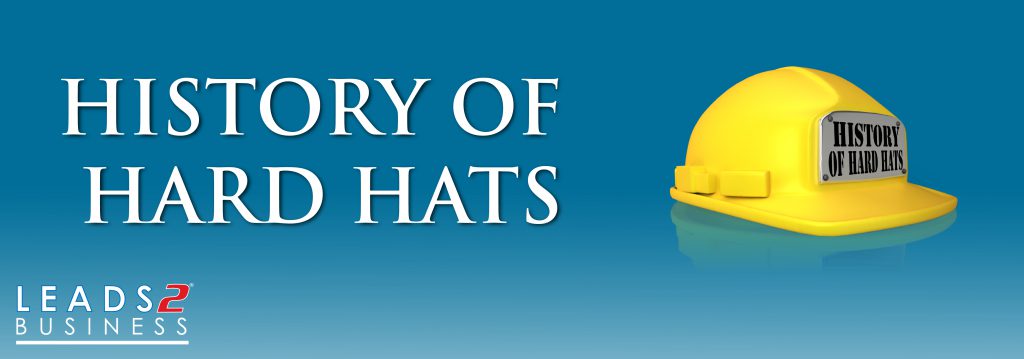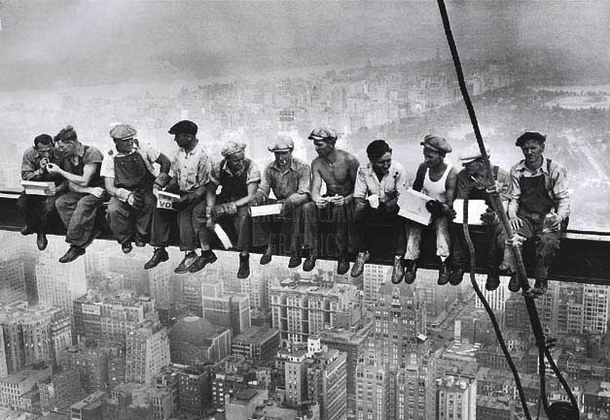.History of Hard Hats

Hard Hats; a common symbol of the Construction Industry, but have you ever stopped to wonder about the History behind this safety accessory?
History
According to Prescot Valley Tribune, “The Hard Hat originated with Edward Bullard, a WWI veteran. He brought a steel helmet home after the war. This metal headgear was the inspiration to revolutionize industrial safety. Bullard’s father worked in the industrial safety business for 20 years and sold protective hats, but they were made of leather.
Construction of the Hoover Dam, which began in 1931 was the first project in which construction workers were required to wear Hard Hats. Later, in 1933, the construction site of the Golden Gate Bridge became America’s first “Hard Hat Area”.”
The first Hard Hats were made from:
- Leather
- Canvas
- Steel
- Aluminum
- Fibreglass
- Plastic
- and finally today’s High-Density Polyethylene (HDPE).
Functionality
The function of the Hard Hat is pretty obvious. If worn and fitted correctly it provides limited safety from shock, perforation, fire, water and heat.
Hard Hats also provide a form of identification.
A wearer can use colour coded Hard Hats to differentiate between job titles/responsibilities:
- White – Managers, Engineers, Supervisors/Foremen
- Blue – Electricians, Carpenters and other technical operators (besides civil workers)
- Green – Safety Officers
- Red – Fire Fighters
- Yellow – Labourers
- Brown – Welders and workers with high heat application
- Grey – Site Visitors
These colour codes are general and could change according to the Project.
Over time Hard Hats, like most things also need replacing. As a wearer, you should inspect your Hard Hats before each use. Your support strap should also be replaced annually and the entire hat every five years. Hard Hats may also allow for the attachment of safety accessories; most noteworthy are face shields, respirators, hearing protection and work lamps.
Future
Today’s Hard Hat hasn’t changed much since the 1960’s and has become a staple of safety, but they may be getting an upgrade in the future.
According to Sourceable, “In Australia, RMIT has developed a system whereby sensors can be embedded onto safety glasses, helmets or boots and can monitor and inform workers of impending danger…”
Sounds really interesting, after all, technology is a part of our every day lives and why not safety too.
Industry leaders can achieve much by ‘upgrading’ the Hard Hat. For example, by monitoring and assessing stats you can take precautions; not only in the present but also in the future through behavior analysis. But this may also present issues; like how much monitoring is too much when it comes to privacy and tracking? What are your thoughts?
In conclusion, the future sure looks safe when it comes to Hard Hats. The History of Hard Hats was certainly an interesting topic to research and blog.
Finally
Do you have any Hard Hat stories or facts you’d like to share? Or do you frequently use one?
Sources
https://en.wikipedia.org/wiki/Hard_hat
https://www.pvtrib.com/news/2018/jan/26/ask-contractor-history-hat-protects-workers/
https://www.thenbs.com/knowledge/what-colours-are-safety-helmets-hard-hats-on-construction-sites
http://www.civilology.com/helmet-color-code-construction/
https://sourceable.net/smart-hard-hats-next-trend-construction-safety/
If you are interested in becoming one of our subscribers, please visit our website.
To view notes with screenshots on how to use our website, please visit our Wiki site.
To view more articles, please visit our blog.
About Sasha Anderson
Millennial Mom + wife living the hash-tag life. Reach out if you want to talk: L2B, social media, construction, technology, marriage, parenting, popular culture and travel. Remember: If You Fail - Fail Forward
- Web |
- More Posts(257)


